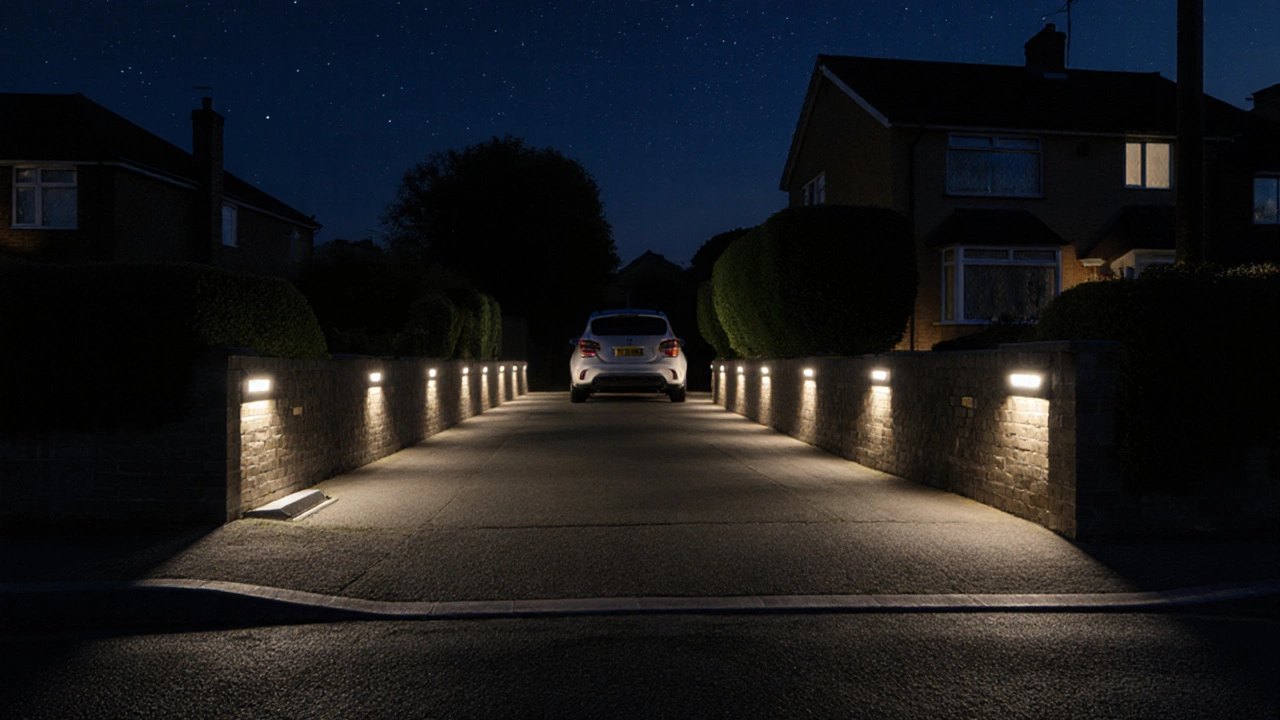When working with solar driveway lighting, a lighting system that runs on solar panels and stores energy in built‑in batteries to power LEDs along your driveway. Also known as solar‑powered driveway lights, it lets you light up the path to your door without pulling power from the grid. Solar driveway lighting delivers safety and curb appeal while slashing electricity bills, and it fits nicely into the push for greener homes.
One core piece is the solar panel, the collector that captures sunlight and converts it into electricity. The panel’s output feeds a battery pack, which stores power for use after dark. This storage‑and‑release cycle requires a reliable battery, often a lithium‑ion or sealed lead‑acid type, to ensure consistent illumination throughout the night. Adding a motion sensor, a detector that switches the light on when movement is detected turns the system into an active security layer. Motion sensors influence solar driveway lighting by only pulling power when needed, extending battery life and reducing wasted illumination. Many models combine a photocell, which turns the light on at dusk, with a motion sensor for extra safety.
These components create a self‑contained ecosystem: the solar panel captures sunlight, the battery stores it, the LED emits light, and the motion sensor triggers operation based on activity. This simple loop lets homeowners enjoy reliable lighting without wiring or monthly electricity costs. Choosing the right fixtures means looking at brightness (measured in lumens), beam angle, and weather rating. A good solar driveway light typically offers 300–500 lumens per fixture, enough to clearly mark the path while staying energy‑efficient. Look for an IP65 or higher rating to guarantee protection against rain, snow, and dust – essential for the UK’s unpredictable weather.
Installation is straightforward. Mount the solar panel where it receives maximum sun exposure – usually on the roof of a garage or a pole angled toward the south. Place the LED fixtures evenly along the driveway, about 3‑4 feet above ground, to avoid glare and to cast light over the pavement. Run the wiring (if your system isn’t completely wireless) through conduit to protect it from the elements.
Beyond safety, solar driveway lighting adds curb appeal. Modern designs blend sleek metal finishes with discreet solar panels, giving a contemporary look while hiding the tech. Because the system is autonomous, you avoid messy trenching or hiring an electrician, saving both time and money.
Maintenance is minimal. Most units have a removable cover for easy cleaning of the solar panel surface – a quick wipe with a damp cloth removes dust that could lower efficiency. Battery life typically lasts 3–5 years; replace the pack when capacity drops noticeably, and the rest of the system continues to work.
Now that you know how solar panels, LED lights, batteries, and motion sensors combine into a reliable lighting solution, you’re ready to explore the specific posts below. They dive deeper into choosing the right fixtures, cost considerations, and real‑world installation tips, giving you a complete roadmap to brighten your driveway the green way.
Another essential element is the LED light, the low‑power, long‑life source that actually shines on your driveway. LEDs consume far less energy than traditional bulbs, meaning the solar panel can charge the battery quicker and the light can stay on longer. Because LEDs produce focused, glare‑free light, they highlight the driveway’s edges without blinding drivers.

Learn how to safely illuminate your driveway with LED, solar, or motion‑sensor lights. Get step‑by‑step design, wiring, and maintenance tips for lasting security.